Entrepreneurship and Creativity: Where Do They Come From and How Not to Destroy Them
(This is a fairly long post. I am working on a conference (see last paragraph) on preparing students as global entrepreneurs. If you are interested, please let me know.)
In his recent weekly address, recorded while touring an Intel plant in Oregon, President Obama once again emphasized the importance of education for America to win the future. And once again, he identified the most important element of America’s strategy to compete globally as he did in his State of the Union address a few weeks ago: innovation.
The truth is, we have everything we need to compete: bold entrepreneurs, bright new ideas and world-class colleges and universities.
Bold entrepreneurs, bright new ideas, and world-class colleges and universities are not only what America needs to compete, but also what every country needs to compete and more importantly, what the whole world needs to succeed.
Entrepreneurs create jobs. According to a study by the Kauffman Foundation, in the United States, new firms on average add 3 million jobs in their first year, while existing firms are “net job destroyers.” For all but seven years between 1977 and 2005, existing firms lost an average of one million jobs annually.
New ideas are essential for the new economy when jobs are created and destroyed all the time because new enterprises depend on new ideas. New enterprises also require more people who can come up with new ideas all the time because many of them are in the “creative business.” The economist Richard Florida in his seminal work The Rise of the Creative Class has clearly documented the rapid growth of the “creative class.”
Entrepreneurship and creativity are undoubtedly the Holy Grail in the 21st Century–hotly pursued and extremely elusive. This is why China, Korea, Singapore, and Japan, as I wrote in my book Catching Up or Leading the Way, have all included creativity as a major goal of their educational reform efforts. This is why these countries have been investing heavily to develop entrepreneurship, foster innovations, and make their colleges and universities world-class.
But according to President Obama, we (the U.S.) just have them. Interestingly, cultivating entrepreneurship and creativity has rarely been mentioned as a goal in US education reform initiatives, which have really been worried about achievement gaps in test scores and teaching science and math. In the same radio address, Obama’s goal of education is “to have the best trained, best skilled workforce in the world” to work for “the next Intel, the next Google or the next Microsoft” that may be created in America. He does not seem to be worried about who may be creating “the next Intel, the next Google, or the next Microsoft.”
As far as I know, entrepreneurs and creative talents do not grow on trees and if they did America does not have a monopoly of these trees. I am sure Americans are not born more or less creative or entrepreneurial than the Chinese, Koreans, Singaporeans, or Japanese. I am also sure it is not pure luck or an accident. Unlike natural resources like oil or gold, entrepreneurs, creativity, and world-class universities do not just happen to be in certain places. Thus we cannot take it for granted that America will always have the bold entrepreneurs and bright new ideas as if they just fall from the sky. We must try to understand where they come from so we do not cut down those trees that produce entrepreneurs and creative talents in America.
More importantly, entrepreneurship and creativity are not only an American business but also the business of the globe. As the world faces an uncertain future, we will need a lot more entrepreneurs and creative talents to develop new industries, new products and services, and new solutions to the many challenges facing humanity.
Research on entrepreneurship and creativity has typically focused on two areas. The first is the personal traits and characteristics of entrepreneurs or creative people. The second is the environment, including characteristics of the societal, cultural, economical, financial, and other social variables that generate more or fewer entrepreneurs or creative products. Given my concern is mostly how schools can help or hinder the development or entrepreneurship and creativity, I will only discuss findings relevant to education.
When Government Stops Planning: China’s Peasant Entrepreneurs
In the book The Invention of Enterprise: Entrepreneurship from Ancient Mesopotamia to Modern Times, prominent economic historians explore the fascinating history of enterprise throughout human history. The historical examination of entrepreneurial activities in different societies clearly shows that cultural and institutional factors can enable or impede innovation and entrepreneurship. For example, societies where entrepreneurial activities are considered less valuable or less prestigious, or even a threat to social order are unlikely to see significant development of enterprises. Societies that deliberately forbid entrepreneurial activities of course are even less likely to see such activities. I personally experienced an enterprise-free China and its damaging consequences when I was growing up. I also witnessed the astonishing entrepreneurial potential people have once such restrictions are removed, even only minimally.
I grew up in a rural village in China’s Sichuan Province and left the village to go to college in 1982. For most of the 1960s and 1970s, my memory is about food or the lack thereof. I remember my father going out to borrow food from relatives who lived far away and coming back with small bags of corn or wheat. I remember my families harvesting potatoes and beans before they were ripe. I remember my fellow villagers dying from starvation, leaving the village to become beggars, eating tree barks and a type of earth and dying from indigestion.
Something miraculous happened around the early 1980s. When I visited my village during the first winter break after college, I found every family had enough to eat and some even had meat.
That something was not my leaving the village but a national policy change for peasants. After the Chinese Communist Party took power in 1949, all family farms were gradually aggregated into co-operative farms, which were then merged into the rural people’s communes. Peasants worked in commune teams and followed farming programs rigidly prescribed and seriously enforced by the government. They must grow what the government told them and in the way the government dictated regardless of their local situation. For example, the climate in my village only supports a maximum of two seasons of rice crops, but the government mandated the peasants to grow three seasons to increase yields. But in the end, none of the three seasons of rice produced any good result. Moreover, no family was allowed to grow their own food for a while.
In 1978, as I later learned, a group of peasants in a small village in Anhui Province, secretly decided to break the village team into families, allowing each family to work on their own. The villagers took tremendous risk and prepared to go to prison but their gamble paid off. In the next year, this village of 20 families produced 60,000 kilograms of grains, about the total amount produced by the village between 1955 and 1970. The secret was quickly discovered by neighboring villages and of course the governments. Fortunately the top leaders were ready to change. This risky experiment became a model for reform in China. By 1982, China has dismantled most communes and adopted the so-called family responsibility system, which in essence restored family farming and gave each family the autonomy over their business. As a result, crop yields rose and the national grain harvest shot up from 304.8 million tons in 1978 to 407.3 million tons in 1984, basically solved the problem of food that plagued China for the previous three decades.
The Chinese peasants may not be entrepreneurs as it is commonly understood but the story illustrates the constraining power of government planning and the liberating power of autonomy. When autonomy is granted, people become more motivated and when there is autonomy, people become more creative in designing solutions to their problems. But government and certain type of people seem to believe they somehow have more wisdom than the people and therefore cannot resist imposing such “wisdom” upon the people in the name of helping them. When it comes to education, such imposition comes in the forms of national standards, standardized curriculum and testing, and certain “evidence-based” pedagogical approaches. Some governments, such as the one in the United States, seems to think they know what is best for all children, what works for all children, what every child and their parents, and they have the crystal ball and can know that the future will only need scientists, mathematicians, and engineers. Well actually not real creative scientists, mathematicians, or engineers, but people who can get good test scores in these subject areas.
History only shows that government planning can indeed standardize production and increase efficiency because it reduces diversity and divergence, but such standardization is precisely the most effective tool to squelch entrepreneurship and creativity.
The Useful “Useless” Artists: Bohemians and Entrepreneurship
I found it amazing that a president who spends time couching his daughter’s basketball team and who sends his children to a private school that believes “all our students have within them the light of creativity and can learn much of value from their own and others’” and thus provides rich art, music, and sports programs and teaches foreign languages starting from Pre-K want only more math and science for other people’s children. It is equally amazing for the Secretary of Education, whose love for basketball helped him get to Harvard, found his wife, and become close friends with a man who made him the secretary of education, to think other people’s children should only focus on getting good test scores on the so called core academic subjects. Somehow, arts, music, sports, foreign languages, or any subjects other than English, mathematics, and science have been considered soft or “useless” in American education reforms judging from the Federal education funding priorities or public statements made by the political leaders. These are also the programs that are typically first to be cut or reduced when schools face financial difficulties or need to improve student test scores to meet AYP.
Are arts, sports, music, foreign languages or other similar subjects really useless for economic development and thus deserved only by the elite?
A study conducted by the economist Richard Florida, author of the best-selling book Rise of the Creative Class, shows otherwise. In an analysis of regional new firms formation, Florida and his colleagues found that the proportion of authors, designers, musicians, composers, actors, directors, painters, sculptors, craft- artists, artist printmakers, photographers, dancers, artists and performers has a significantly positive relationship with concentrations of high-technology industry.
Plus, if President Obama’s daughter, who is under 10 and is already studying Chinese and got to practice it with the Chinese President, why should not all children be afforded such opportunity? If learning a foreign language is important for all children, why does not the President puts in request for funding for foreign language teachers, which I believe are in greater shortage than math and science?
Entrepreneurship and creativity are closely related and are not just math and science, as Florida and colleagues have shown in their study. The excessive focus on a few subjects will great reduce the diversity of talents and hinder innovation and entrepreneurship. Furthermore, in the age of globalization, all entrepreneurial activities are conducted in the global context. Understanding other cultures and proficiency in a foreign language greatly enhances the entrepreneur’s perspective on the global market and their capacity to interact with workers and consumers worldwide.
Nothing wrong to feel good about oneself: Confidence and Entrepreneurship
Research has shown that optimism, confidence, and a high self-esteem are beneficial to one’s well-being—not only spiritually but also materially. A study conducted by a University of Florida management professor, Timothy Judge found “people with high opinions of themselves as teenagers and young adults drew bigger salaries in middle age than their less confident counterparts, and the gap was widest for those from privileged backgrounds.”
Confidence is also a common trait among entrepreneurs. In fact some considers it the most important element of entrepreneurship. For example, in the book Entrepreneurship Education: Current Developments, Future Directions, edited by Calvin A. Kent, former dean and distinguished professor at the Lewis College of Business of Marshall University and twice elected president of the National Association of Economic Educators, it is stated:
There is no more important attribute of entrepreneurship than a sense of self-confidence, the belief in oneself and one’s own ideas. Entrepreneurs are agents of change, and change is usually resisted. Entrepreneurs will continually confront roadblocks and resistance from individuals who do not support or believe in their ideas….To confront and overcome the resistance they will encounter, it is imperative that entrepreneurs have a sense of self-confidence.
The lack of self-confidence has been viewed as viewed as a major stumbling block to develop entrepreneurship in many countries. For instance, when asked why in South Africa entrepreneurship is not growing as fast as the country needs, Judi Sandrock, Chief Entrepreneurship Officer (CEO) of South Africa’s Branson Center of Entrepreneurship, said “I think it has a lot to do with confidence.”
Schooling has something to do with self-confidence and according to Calvin Kent:
Unfortunately, activities in our school system today work against the instilling of self-confidence in youth. Many young people come to believe that they do not measure up or have “what it takes.”
Internationally, there is a peculiar phenomenon uncovered by the well-known Trends in International Mathematics and Science Study (TIMSS). While self-confidence in math abilities is positively correlated with math scores within each country, this pattern does not exist across nations. In fact, it is just the opposite. Countries with high math scores tend have lower confidence score. For example, “Asian students achieve high scores in international studies, they tend to have relatively lower self-confidence and self-esteem when compared to Western students,” writes a scholar based in Hong Kong. In contrast, American students have scored relatively poorly but they have expressed higher level of confidence.
What is interesting is that Asian countries have been worried about their students low-confidence and self-esteem, thinking that emphasis on test scores may have damaged confidence, Americans have been worried that American students’ confidence may be culprit of their low test scores. For example, a Brookings Institute report suggests that “the American infatuation with the happiness factor in education may be misplaced.” The same report continues to suggest that we should make American students less confident and do not worry about students’ happiness and enjoyment because “if enjoyment and self-confidence are divorced from an academic purpose—if they are pursued as ends unto themselves—they appear to lose their educational value.”
This suggestion is complete nonsense to me. There is no reason to sacrifice confidence for test scores because research suggests that confidence leads much longer term benefits test scores have not been proven to lead national prosperity or individual success, as Vivek Wadhwa, director of Research, Center for Entrepreneurship and Research Commercialization and Executive in Residence, Pratt School of Engineering, Duke University writes in his recent article in Business Week:
Do high PISA rankings make students more likely to invent the next iPad? Google? I don’t think so.
The “bold entrepreneurs” America has as President Obama so proudly claimed may have a lot to do with American’s confidence and his pursuit of higher-test scores may work against the production of more “bold entrepreneurs” in the future, if such suggestion as the one proposed by the Brookings Institute Report is followed. I would of course like to have both good scores and confidence, but if I had to choose, I’d rather choose confidence over test scores because with confidence, one can continue to learn and more importantly, for its role in entrepreneurship. Again, Calvin Kent:
Hence, any program in entrepreneurship education should assign the highest priority to increase self-confidence…No other area of success is important.
Entrepreneurs are non-conformists, risk-takers, and creative: English Dissenters and Chinese and American Students
During the era of the Industrial Revolution, a small minority group (between 5 to 10 percent of the population in 18th Century England) accounted for one half of the scientists and inventors listed in the Royal Society and half of the known entrepreneurs. They were the Dissenters or Non-Conformists—those who refused to conform to the Church of England. Economic historians are still debating about the various reasons for this remarkable phenomenon but one cannot deny the fact that this group held a non-conforming and rebellious attitude.
Research on entrepreneurship suggests that entrepreneurs tend to share this attribute of non-conforming and are willing to take risks. They are not only willing to but also seek to deviate, to come up with new ideas, and that is creativity.
While I have discussed how creativity can be developed and stifled extensively in my book Catching Up or Leading the Way, here I summarize a series of studies conducted by psychologists Robert Sternberg and Weihua Niu comparing creativity between Chinese and American students to caution those who are obsessed with standards and standardized testing. In an article published in Psychology in the Schools (2003, 40:1, pp103-113) with the title Societal and School Influences on Student Creativity: The Case of China, Weihua Niu and Robert Sternberg, both at Yale University at time, conclude:
Chinese students outperformed American students in many international competitions in mathematics and other natural sciences. Our studies, however, have shown that compared with their American counterparts, Chinese students’ artwork is generally perceived as less creative by both Chinese and American judges. It may be, therefore, that Chinese students “lag behind” their American counterparts in the domain of creativity, even though they generally “excel” in conventional academic tasks.
In their explanation for factors contributing to this difference, they offered three suggestions, two of which are specifically related to school activities. First, Chinese students “have been exposed to a school system that predominantly emphasizes the learning of basic knowledge and analytical skills,” whereas the American school system tends to stress self-orientation and self-expression. Second, the high-stakes nature of the Chinese testing system pushes the Chinese students to be “concerned predominantly about doing well on standardized analytical tests, and there is conspicuously less incentive for cultivating creativity.” In contrast, in America, “an individual can, and many do, excel in this society by way of creative achievement, independent of his or her performance on standardized analytical assessments.”
This may be another reason that President Obama can proudly claim “we have everything to compete: bold entrepreneurs, bright new ideas…” But his prescription for education is likely to work against what is proud of now and what he wishes for America in the future.
The entrepreneurship literature also suggests the importance of friends or social networks, persistence, and a host of other factors—many of them are not taught and cannot be learned by simply focusing on achieving good test scores in core academic subjects. Quite on the contrary, they are learned elsewhere. So perhaps, what everyone needs in the 21st Century—entrepreneurship and creativity come from activities that may have been construed as “bad” or “useless.” Vivek Wadhwa provides an insightful analysis:
… the perception is that American children live a relatively easy life and coast their way through school. They don’t do any more homework than they have to; they spend an extraordinary amount of time playing games, socializing on the Internet, text-messaging each other; they work part time to pay for their schooling and social habits. And they party. A lot. These stereotypes worry many Americans. They believe the American education system puts the country at a great disadvantage. But this is far from true.
The independence and social skills American children develop give them a huge advantage when they join the workforce. They learn to experiment, challenge norms, and take risks. They can think for themselves, and they can innovate. This is why America remains the world leader in innovation; why Chinese and Indians invest their life savings to send their children to expensive U.S. schools when they can.
What Can Schools Do to Prepare Global Entrepreneurs: A Conference?
The world needs more entrepreneurship and creativity but the dominant thinking about schooling today is still about preparing employees for entrepreneurs. Schools are asked to prepare students to develop the skills and knowledge that will help them find a job. This is one of the reasons existing businesses executives have been given such a big platform to define what schools should teach. But given the uncertainty of the future, a future where many jobs have not even been invented and many of the presently existing businesses may not even exist, schools have to prepare students to invent jobs, not find jobs.
Entrepreneurship and creativity do not come from government planning, standardized curriculum, or standardized testing. On the contrary, government planning, standardized curriculum, and testing tend to work against both entrepreneurship and creativity. Moreover, entrepreneurship and creativity are much more than a set of prescribed knowledge and skills. They are more spiritual, psychological, social, and cultural than simply cognitive skills. Therefore we cannot wait until they grow up and provide a crash course on entrepreneurship and creativity. We have to start young and deliberately work to develop what is needed for entrepreneurship.
For this purpose, I am working with iNET (International Networking for Educational Transformation), a global network of schools headquartered in London, to develop a conference to discuss what schools can do to prepare global entrepreneurs on August 3rd and 4th, 2011 in Portland, Oregon. If you are interested, please email me.




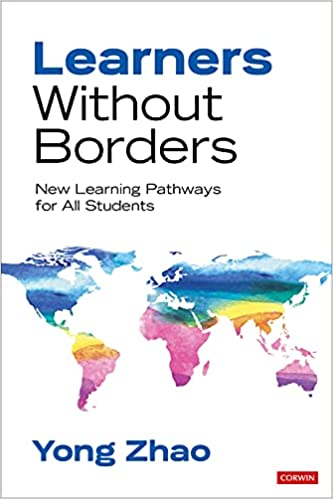




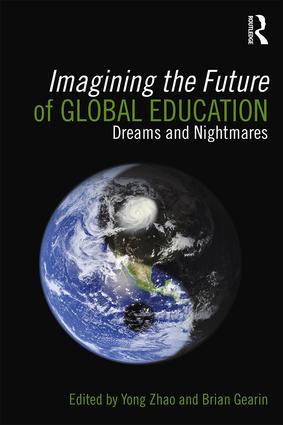
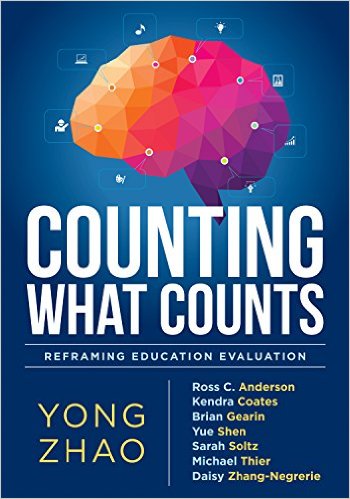


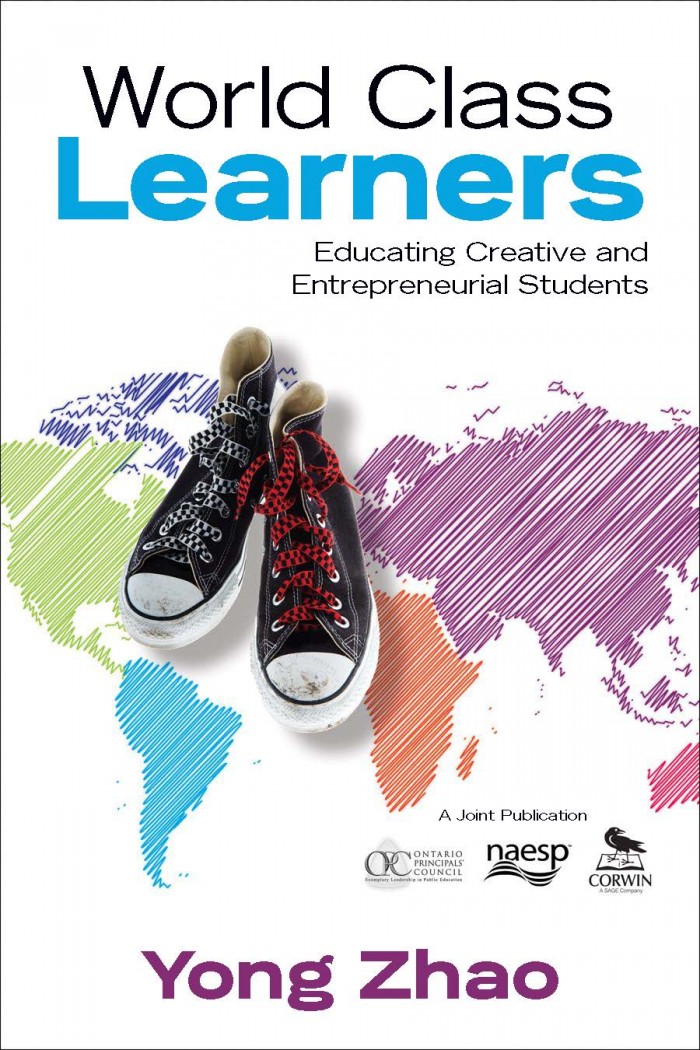


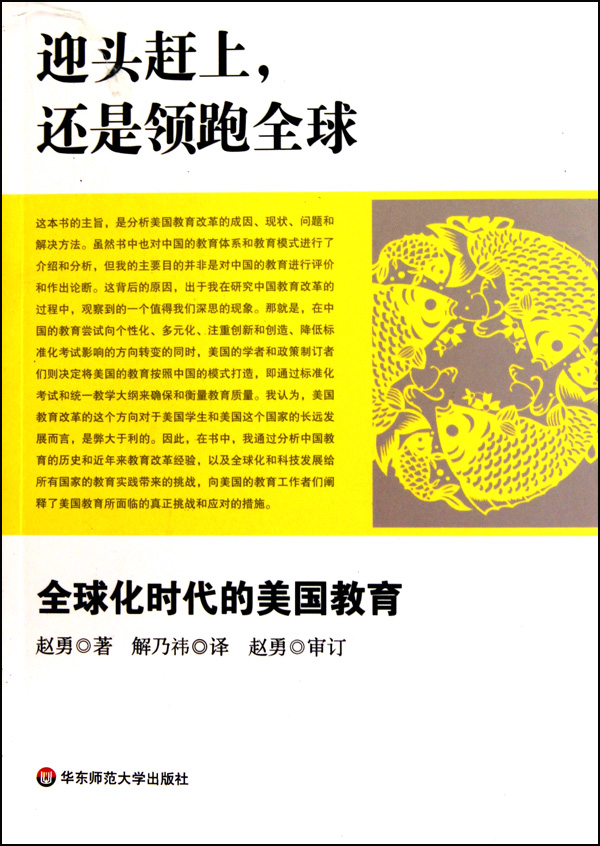










I teach (special education)in an urban high school, in a district that has been cutting back on the arts, sports, languages, even JROTC. I deal with students everyday who lack self-confidence, have no creative outlets, and have been set up to fail in the core subjects due to “common” assessments that are too difficult. Eighty plus percent of our Algebra One students are failing, yet we expect these students to come into our classes each day, go through the “meaningless” routine during which they learn practically nothing that is relevant to them, and expect them to pass test after test. Then, when they fail, we expect them to retake the same test without any remediation! Does this fit the definition of insanity? But, when the idea is mentioned that maybe we need to teach to each student’s individual strengths, make sure the prerequisites are met in order to place students appropriately, or take a look at revamping our curriculum, teach them how to problem-solve and think creatively…well, the wall I run into is a sturdy one.
I have noticed my own son, who is a Junior in high school, is struggling with self-confidence, wondering if he is “smart” enough, if he will do well on the upcoming MME/ACT, will he do well enough to go on to college and be “marketable” in the future? I have started to wonder recently, if he has these feelings, after being nurtured in the arts and afforded opportunities to express his creative talents, what must my students be feeling? What can I do to encourage them to continue to give it their best shot, not give up on themselves completely? So, I have come to the conclusion that at this point all I can do is encourage them by letting them know that I care, that I haven’t given up on them, that I am willing to put my efforts into ensuring they succeed if they are willing to let me. I will also continue to advocate for change, both for our district and for the rest of the US. So, the long and short of this reply is that I commend you for the work you are doing with iNet and wish you much success with your upcoming conference. It would be wonderful to see our country reform our educational system and truly prepare our students to become global entrepreneurs in the 21st century.
Excellent information, Dr. Yong Zhao. I agree whole-heartedly.
Thanks for writing about this important topic. I was especially glad to see Vivek Wadhwa mentioned and think you might also be interested in U.Va. Darden Professor Saras Sarasvathy’s work on “entrepreneurial thinking” that’s finally gaining momentum and is relevant to this post.
I am considering a teaching position in an “American” School in China and have been told that many of the enrolled students are Chinese, because they (or their parents) want to have an American education.
So I am wondering if it means the American education we currently have or would an authentic, project based, performance assessments, big picture, arts integrated, life skills, service learning curriculum, be American enough? Any ideas?? Is it just too hard to fight so many years of the testing?
Often when people talk about skills and mindsets such as entrepreneurship, it is tempting to add another course to address the “topic.” Not only is this a poor model, with work quickly moving to be more project based and less about long-term employment, entrepreneurship is a skill that everyone will need. The skills need to be woven throughout the curriculum rather put aside in a course that only few will take.
Best regards,
RJ Johnson
[…] thinking. A focus on test scores and other goal-based incentives stifles rather than encourages the creativity and inventiveness that is essential to a dynamic society and economy. […]
[…] He warns that standardized testing is constraining the development of creativity. In his blog post, Entrepreneurship and Creativity: Where do they come from and how not to destroy them (Feb. 26, 2011) Zhao writes: “As far as I know, entrepreneurs and creative talents do not […]
School systems in pretty much every society use testing as a means to measure educational outcomes. In reality, however, testing inadvertently weeds out the rebels in society by rejecting those who don’t do well in tests. Testing measures how well you know the “right answers” as determined by society or convention. Those who don’t do well on these tests are classified euphemistically as “at risk” or bluntly as just plain stupid and lazy. Ironically, these rebels are the ones who contribute the most to society by delivering revolutionary progress rather than incremental progress. It is unfortunate that humanity usually doesn’t appreciate the contributions of rebels until years later.
Because Confucian societies value social order, testing and conventional wisdom, they do a better job suppressing these rebels. This is not just their school system as these beliefs are part of their value system in every levels of society including family, employers and government. These Asian countries are starting to realize that this way of thinking is detrimental to their long term success.
America is great because it allows many channels for success. American society, for whatever reason, tend to value accomplishments over credentials, grades or test scores. To name a few, people like Thomas Edison, Steve Jobs, Steven Spielberg and James Cameron would never have been given a chance to succeed in countries like China.
[…] Entrepreneurship and Creativity: Where Do They Come From and How Not to Destroy Them […]
My husband and I are entrepreneurs and church pioneers. We have set up a business and church from scratch. Our kids have high self-confidence, a strong sense of identity, are highly creative (and I include using technology in that) and are verbally persuasive my observation is the difficulty in finding the right educational establishment for them. We have generally found the IB programme to be an excellent one for nurturing critical thinking, sense of self-worth and leadership. This is okay for my older son, but I have a 3 year old whose playgroup is struggling to ‘manage’ him. For example, he doesnt like circle time, sitting still and prefers to be moving around, learning by touch. They have told me he is way beyond his peers academically but social skills of sitting and listening are hard for him. He challenges everything and is very strong willed. Some teachers could work with that, but some might struggle and see it as a threat. I would be very interested to hear from other parents who have issues like mine. Thanks.
my observation is the difficulty in finding the right educational establishment for them. We have generally found the IB programme to be an excellent one for nurturing critical thinking, sense of self-worth and leadership. This is okay for my older son, but I have a 3 year old whose playgroup is struggling to ‘manage’ him. For example, he doesnt like circle time, sitting still and prefers to be moving around, learning by touch. They have told me he is way beyond his peers academically but social skills of sitting and listening are hard for him. He challenges everything and is very strong willed. Some teachers could work with that, but some might struggle and see it as a threat. I would be very interested to hear from other parents who have issues like mine. Thanks.
[…] “Entrepreneurship and Creativity: Where Do They Come From and How Not to Destroy Them,” http://zhaolearning.com/2011/02/26/entrepreneurship-and-creativity-where-do-they-come-from-and-how-n…. (2) Bloom, N. 2012. “We Need Problem Solvers, Not Test Takers,” […]
[…] Zhao Learning website, Feb […]
Hi Professor Zhao:
Just noticed that in his March 31st column, Tom Friedman echoed your words about inventing jobs, not finding them.
Reference: http://www.nytimes.com/2013/03/31/opinion/sunday/friedman-need-a-job-invent-it.html?_r=0
All the best,
Mark